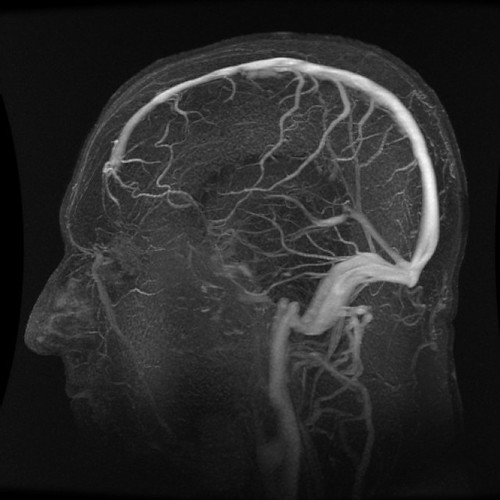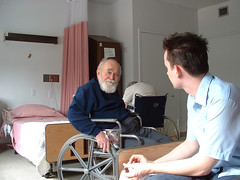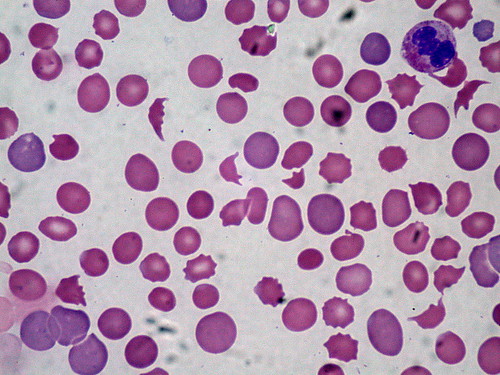Many people suffer from seizures and if you ever see it happen it can be scary. Here are some tips on how to deal with a situation when someone has a seizure
 |
Photo license:   Some rights reserved Some rights reservedhttp://flic.kr/p/787suA |
Seeing someone have a seizure can be one of the scariest things you’ll experience. This person has lost all control of their body, which has resulted in them thrusting around and shaking uncontrollably.Unfortunately, all seizures are different. Some can last for a few seconds while others can last for minutes, and if you’re not trained in how to handle a seizure, you could end up causing even more harm to the seizing individual or even to yourself.If you ever find yourself in a situation where someone is seizing, the following are ways that you can help
.
Keep calm.
The first time you see someone seize you will feel a variety of different emotions, but it’s very important that you keep calm. Not only will this ensure that you are doing everything you possibly can, but it can also help keep others calm and help make the process easier on everyone involved.
Move everything out of the way.
A seizing person does not have control of their body, and their strong thrusts can move them around a room at a quick pace. Because of this, it’s very important that you clear the area as quickly as you can of anything that can cause harm. Move chairs, toys, furniture and any other movable objects out of the way so that they don’t cause harm if the seizing person were to hit them.
Try to keep time.
Knowing how long a seizure lasts is important to doctors and other medical professionals, and if possible, you should try and keep track of how long the seizure lasts.
Do not restrain them.
Some people think that they need to hold a seizing person down, but this is not a good idea. Putting pressure on their body can cause stress and may end up doing more harm than good. Plus, you don’t want to also put yourself in danger, and trying to hold down a seizing person can mean that you get hurt in the process.
Keep everything out of their mouth.
Old urban legends talk about how seizing people can swallow their tongue, but this is untrue. Make sure that there is nothing in the mouth of a seizing person, as this can cause them to choke during the seizure. You also want to make sure that your hands are away from their mouth, as they could clamp down on your hands during the seizure and cause serious harm to you
.
Call 911.
Calmly ask someone else nearby to call 911 if possible. If not, you will have to do so while keeping a close eye on the person who is seizing. Having professional medical professionals arrive will be the best thing for the person having the seizure.
Turn them on their side.
Once the seizure has subsided, make sure to turn the person on their side. Many people experience post seizure vomiting, and you’ll want this person on their side to keep them from choking on their vomit.
Never leave them alone.
A seizing person should never be left alone. Make sure that you are always in the same area while the person is having a seizure. This can help keep harmful objects out of their way, and it will allow you to pay attention to things like time or actions that can be important for medical professionals to know.
Garrett Payne is an exercise fanatic & health expert. He shares information on the causes of seizures and how to deal with them via blogging.
As you narrow down your search, here are some of the top considerations to make when purchasing such a device
 |
Photo license:   Some rights reserved Some rights reservedhttp://flic.kr/p/921g1 |
Did you know that each year, sudden cardiac arrest (SCA) kills more than 250,000 Americans? This heart condition strikes without warning and requires immediate help if the person affected by it is to survive. An increasingly common fixture in businesses and public areas is an automated external defibrillator (AED). These lifesaving devices are used when somebody collapses to help restart the electrical patterns in the heart. Because of the importance they play in this relatively common condition, you may be considering the purchase of an AED, or multiple AEDs, for your organization.
As you narrow down your search, here are some of the top considerations to make when purchasing such a device.
1. What kind of training will you and your employees receive with the device?
There are a number of resources available where you and your staff can learn how to use one. This training is important, as it will increase the effectiveness of the device in case of an emergency.
2.Is the instrument up to date with the most recent technological developments?
Because of how common SCA is, manufacturers are constantly updating their technology to meet the latest innovations. This includes being lighter, easier to carry and easier to use.
3.Who will be using your AED?
Chances are that you do not require a sophisticated model and can purchase the most basic and easy-to-use device. This will help bystanders with little to no medical experience still use the device effectively. If you are purchasing one for a staff of people with medical backgrounds, you may want to consider getting a more complex system.
4.What are other customers saying about the model you are considering?
Just like any major purchase, reading reviews can give valuable insight into what you can expect from your purchase. Do a search online or talk to other companies who have an AED to see if they have ever had to use the device, and if so, what their experience was.
5.Do you need an AED for children?
If you frequently have children in your place of business, you may need a device for children as well as adults. There are different models for younger children that you should look into if this is the case.
As you search through various brands and manufacturers, consider the answers to these questions to help you make the best purchasing decision for your organization because your health is the most important thing.
Samantha really enjoys writing and one of her favorite things to write about happens to be health. If you'd like to learn more about external defibrillator, please visit http://www.aedbrands.com/
 |
Photo license:   Some rights reserved Some rights reservedsource : http://flic.kr/p/6dT92k |
Caring for an Alzheimer’s patient requires the caregiver to possess a special set of skills and a deep understanding of the disease. It can be a challenge to meet the needs of the patient as the disease progresses. Dealing with an Alzheimer’s patient on a daily basis requires patience and a caring nature.
Communicate Clearly
When you are communicating with an Alzheimer’s patient it is important to keep it simple. Your words should be simple and keep your sentences short. Make sure your responses when you are having a conversation with the patient as well as when you are giving directions to the patient are short and clear. It is best not to argue with the patient. Alzheimer’s patients can become easily confused and upset when they are contradicted. Don’t argue or correct the patient, instead simply redirect his or her attention to a new topic. In addition, in order to keep the patient focused on what you are saying, it is important to make eye contact and minimize any potential distractions.
Establish a Routine
Alzheimer’s patients respond best to a daily routine. This is because as the routine becomes familiar and he or she knows what to expect. As you establish a routine it is a good idea to let the patient know what is expected of him or her next. For instance, if it is time for the daily bath, tell the patient the steps you both will follow in order to accomplish the bath. This procedure takes the fear of the unknown out of the process and gives the patient something to focus his or her attention on. Among nursing home jobs, becoming a caregiver for an Alzheimer’s patient is one of the most challenging and one of the most rewarding jobs.
Be Positive
Perhaps the most important requirement for working with Alzheimer’s patients is to be positive in your interactions with them. They now inhabit a confusing and sometimes frightening world due to this disease so the caregiver needs to reassure the patient with positive reinforcement. The very nature of the disease ensures that the patient will make mistakes and experience misunderstandings. It is to be expected. As a caregiver, it is your job to help the patient experience life in a safe and positive environment. Most nursing home jobs require that the caregiver possess a warm and caring nature in order to deal with patients that can sometimes be difficult.
I am a blog writer with an interest in home care jobs and opportunities. I contribute to health and medical blogs whenever I have free time.
What Low Testosterone Can Do to Your Health
 |
| Featured images: License: Royalty Free or iStock source: http://office.microsoft.com/en-us/ images/results.aspx?qu=men&ex= 1#ai:MP900443830|n |
Testosterone is the hormone that we associate with when we think about men. Testosterone makes a man go through puberty. From the hair on his chest to the increase in muscle mass, testosterone is the building block of being a man. As a man gets older he relies on having a lot of testosterone pulsing through his veins to keep him bold and strong. What happens when this hormone wanes? What should we turn to when looking for a boost in testosterone levels?
What is Low Testosterone?
The upper limit of testosterone in a man’s system is around 1,100 nanograms per deciliter. When a blood test is taken, testosterone levels can be shown to be much lower. The lowest tolerance for testosterone in a man can be about 100 ng/dL.
The effects of low testosterone include:
• Drop in Bone Density
• Issues for Trying to Start a Family
• Depression
• Loss of Interest in Sex
Symptoms of Low Testosterone
Low testosterone is that it can be hard to pinpoint. When you have yet to have a blood test you may notice signs of other diseases such as diabetes, high blood pressure or thyroid issues.
Some of the symptoms of low testosterone include:
• Common tasks take longer
• Weight gain in the stomach area due to muscle waste
• Lower sex drive and erectile dysfunction
• Male breasts
• Osteoporosis
• Loss of interest in issues or activities
Low testosterone can leave you feeling the blues. You may become more sedentary because your desire and recovery time when exercising is causing you to choose not to exercise. When you are not getting enough activity, the results are feeling depressed, weight gain and fatigue. Your world is no longer what you want it to be. Low testosterone has caused you to withdraw from being the man you were or that you want to be.
Some of the symptoms of low testosterone include:
• Common tasks take longer
• Weight gain in the stomach area due to muscle waste
• Lower sex drive and erectile dysfunction
• Male breasts
• Osteoporosis
• Loss of interest in issues or activities
Low testosterone can leave you feeling the blues. You may become more sedentary because your desire and recovery time when exercising is causing you to choose not to exercise. When you are not getting enough activity, the results are feeling depressed, weight gain and fatigue. Your world is no longer what you want it to be. Low testosterone has caused you to withdraw from being the man you were or that you want to be.
Treatments for Those with Low Testosterone
Thankfully you do not have to adapt to having these blue feelings. There are many testosterone boosters on the market today.
Testosterone supplements work to provide more testosterone by encouraging your own body to produce more testosterone. Many supplements are based off of herbal remedies such as zinc or magnesium.
Testosterone injections are often used as testosterone boosters for couples whose concern is trying to get pregnant. These injections are administered at intervals of a few weeks and help to increase sperm production.
For men looking to fight the feeling and effects of low testosterone on a daily basis a gel or patch is a solution. These boosters are applied directly to the skin. With this method testosterone levels are regulated so that you can get back to feeling like yourself.
Featured images:
License: Royalty Free or iStock source:
http://office.microsoft.com/en-us/images/results.aspx?qu=men&ex=1#ai:MP900443830|
Stephen Craig is a regular guest blogger that has been published on many online publications.
 |
| source : http://www.flickr.com/photos/euthman/301920983/ |
Thrombocytopenia- Causes , Symptoms And Treatment
Would you like to know the reason why you have low platelet counts in your blood? This is article that you are looking for. We will try to give you all that we can about the condition and how you can deal with
it properly without further complications in the future. However, let us first concentrate on the meaning of the word thrombocytopenia.
Definition of Terms
This condition refers to a significant decrease in blood platelets. A normal individual has platelets of about 450,000 platelets per micro-liter. This is why any decrease in the amount of blood platelets may result to this condition in the future. There are a few symptoms that you should watch out for when it comes to this condition as follows.
Signs and Symptoms
Below is a list of symptoms that you should keep in mind if ever you suspect yourself of having this condition in the future.
- Bruising
- Hemorrhages on the skin as well as the mucous membranes
- Nose and gum bleeding
- Fatigue
Additional Information
Further testing will ensure that the condition is not caused by any secondary infection in the blood. It is also important to make sure that the number of red and white blood cells are not decreased due to infection.
Furthermore, discoloration is also present whenever you have Thrombocytopenia. They may be purple, blue or yellow green bruises. In addition to this, they can appear anywhere in the body.
Major Causes
Thrombocytopenia can be caused by a number of reasons as follows.- Vitamin B12 deficiency
- Liver failure
- Leukemia
- Steps as or any other types of bacterial or viral infection
- It can also be drug related
- Human immunodeficiency virus
Possible Treatment Methods
You do not have to worry because of this condition is treatable. There are various medications that doctors recommend in order for you to be treated of the disease. Here are some of the recommended drugs for the condition.
- Corticosteroids
- Folate
- Blood transfusion
For this reason, it is important for you to get to know the root cause of the disease so that you would be able to find out how you can treat it effectively without further complications. Knowing what you are going up against will help you fight it effectively in the future.
Shan is an accomplished writer and blogger. His blog Healthresource4u.com talks about different health related topics. He loves to write about women’s fitness related topic like hymen, yeast Infection in women etc.
Pleural biopsy
Pleural biopsy is a medical procedure that pleural fluid contains exudate
and other procedures for example thoracocentasis has failed to reveal the cause
of pleural effusion.Biopsy is taken from the pleura and it is usually performed
when the doctor is suspecting malignancy.
INDICATIONS
Pleural biopsy is indicated in the following condition:
* Pleural effusion with exudate
* Suspected pleural malignancy
* Tuberculosis
* Sarcoidosis
* Systemic lupus erythematosis (SLE)
CONTAINDICATIONS
Pleural biopsy is not performed in patients with coagulopathy or
anticoagulation, empyema and low volume pleural effusion.It should not be done
without the consent of the patient.
EQUIPMENTS
Set up the bedside trolley before starting the procedure.The equipemnts
used in the pleural biopsy are as follows:
* Sterile gloves
* Sterile drapes
* Pink prep solution (2% Chlorexidine in isopropyl alcohol)
* Local anesthetic (2% xylocaine)
* Scalpel ( 11 number)
* Cope needle or Abram's needle
* 50 cc syringe
PROCEDURE
1-Place the patient sitting upright and leaning forward on the table at an
angle of 45 degree.
2-Place sterile drape on the patient.
3-Clean the skin with antiseptic solution (pink prep solution).
4-Introduce local anesthetic in the skin.
5-Make an incision through the ribs large enough for entering the cope
needle.
6-With the stylet, enter the cope needle (attached with 50 cc needle) over
the top of the lower rib into the pleural space.You will feel a 'give' when
needle will enter the pleural space.
7-Ask your patient to say 'ooooh' for deep expiration.
8-In the meantime, remove the stylet and inner tube simultaneously.
9-Withdraw the needle carefully, angling it so that the side aperture snags
the pleura.Obtain the sample by moving the inner cannula forward and twisting
it.
10-Take the sample from the needle attached to the syringe.
11-Place samples in 10% formalin for histology and in saline for culture
and immunofluorescence.
12-Apply pressure bandage to the area after completion of the procedure.
COMPLICATIONS
A number of complications may arise due to pleural biopsy.They are as follows:
* Hemorrhage
* Empyema
*Pneumothorax
* Hemothorax
* Skin swelling over chest (due to extravasation of pleural fluid)
* Tumor seeding
PATIENTS EDUCATION
Explain the procedure and its possible complications to the patient.Tell
the patient to report immediately in case of any complication.Take the consent
of the patient before performing the procedure.
Subclavian vein cannulation
Subclavian vein cannulation is a medical procedure that is performed for central venous access.It allows sampling of blood as well as administration of medications.It is not the first option for venous cannulation instead it is used in patients with cervical spine injury and it is a preferred method of cannulation for long term use (dialysis, feeding).
Indications
Subclavian vein cannulation is preferred in following conditions:
* Cervical spine injury
*Measurement of central venous pressure
* Administration of medicines (vasopressors, chemotherapy)
* Hyperalimentation
* Continuous renal replacement therapy
* Hemodialysis
* Poor peripheral venous access
Contraindications
Subclavian venous cannulation should not be performed in the following conditions:
* Infection on the site of cannulation
* Subclavian vein thrombosis
* Fracture of clavicle and ribs of the same side
* Coagulation disorders
Equipment
You should have the following equipments ready to perform the subclavian vein cannulation:
* Sterile gloves
* Sterile drape
* Antiseptic solution ( alcohol or providine-iodine solution)
* Local anesthetic (2% Lidocaine)
* 14-gauge intracath needle with 3 ml non-luer-lok plastic syringe
* Intravenous tubing and stand
* Intravenous solution
* Silk Sutures
* Dressing
* Tape
Procedure
1-Place the patient in 15 degree trendelenburg position.
2-Wear sterile gloves and drape the area.
3-Identify the site.
4-Infiltrate the local anesthetic.
5-Insert the intracath needle attached to the syringe at middle and 2-3 cm caudal to clavicle, at 30 degrees towards the sternal notch.Vein is accessed under the clavicle.
6- Aspirate the syringe gently when free flow of blood appears, remove the syringe and insert the needle into the subclavian vein.
7-Advance the needle into superior vena cava about 15 cm in adults.
8-Apply needle guard.
9-Aspirate and flush the cannula with normal saline filled syringe.
10-Suture cannula to skin.
11-Remove the syringe and fix the cannula to the skin using tape.
12-Apply dressing.
13-Obtain x-ray to check the placement of cannula.
Complications
* Pneumothorax
* Perforation of lung
* Hemothorax
* Hydrothorax
* Hematoma
* Air embolism
* Subclavian vein thrombosis
* Damage to subclavian artery
Patients education
Inform the patient about the procedure and the complications that can be caused by the procedure.After the completion of subclavian vein cannulation, ask your patient to take care of the subclavian line, change the dressing three times daily.Tell him to contact the doctor in case of any complications including fever.
Intravenous cannulation
Intravenous cannulation is a very common bedside medical procedure in which
a cannula is inserted into a vein for administration of fluids, medicine and
for the collection of blood sample.Its an easy and short procedure to gain IV
access and it is normally completed in 2-5 minutes.

